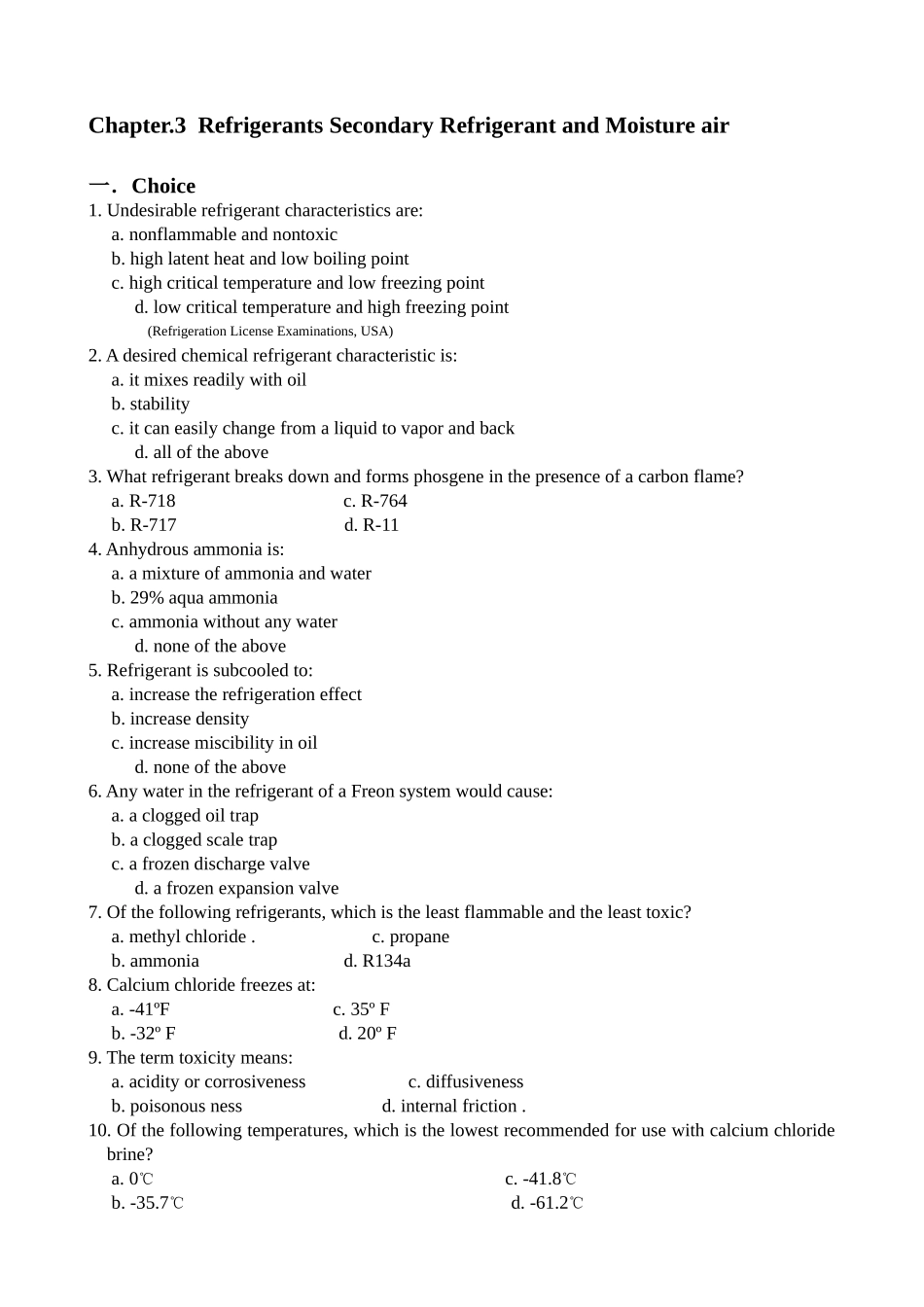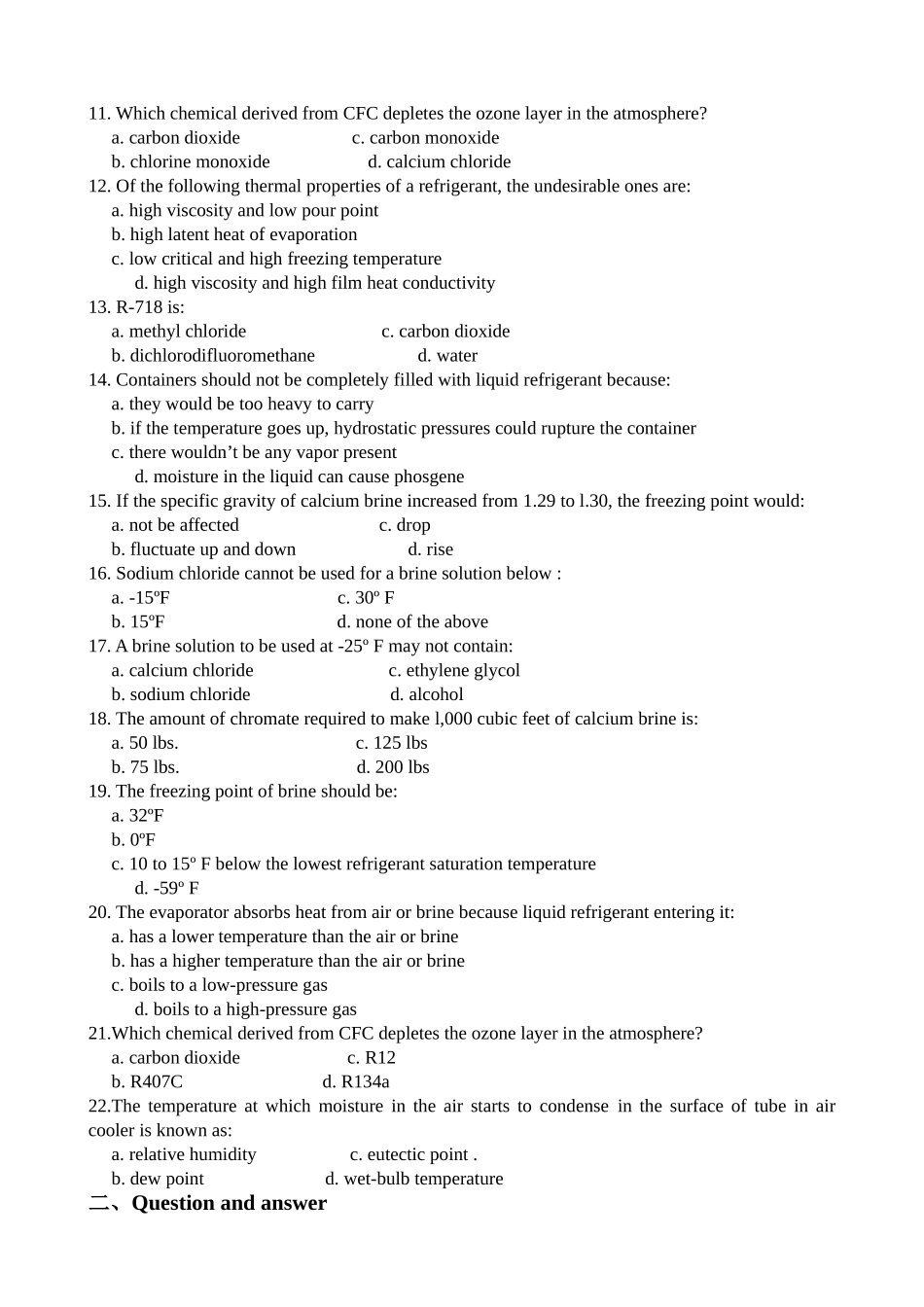Chapter.3 Refrigerants Secondary Refrigerant and Moisture air一.Choice1. Undesirable refrigerant characteristics are: a. nonflammable and nontoxic b. high latent heat and low boiling point c. high critical temperature and low freezing pointd. low critical temperature and high freezing point (Refrigeration License Examinations, USA)2. A desired chemical refrigerant characteristic is: a. it mixes readily with oil b. stability c. it can easily change from a liquid to vapor and backd. all of the above3. What refrigerant breaks down and forms phosgene in the presence of a carbon flame? a. R-718 c. R-764 b. R-717 d. R-11 4. Anhydrous ammonia is: a. a mixture of ammonia and water b. 29% aqua ammonia c. ammonia without any waterd. none of the above5. Refrigerant is subcooled to: a. increase the refrigeration effect b. increase density c. increase miscibility in oild. none of the above6. Any water in the refrigerant of a Freon system would cause: a. a clogged oil trap b. a clogged scale trap c. a frozen discharge valved. a frozen expansion valve7. Of the following refrigerants, which is the least flammable and the least toxic? a. methyl chloride . c. propane b. ammonia d. R134a8. Calcium chloride freezes at: a. -41ºF c. 35º F b. -32º F d. 20º F 9. The term toxicity means: a. acidity or corrosiveness c. diffusiveness b. poisonous ness d. internal friction . 10. Of the following temperatures, which is the lowest recommended for use with calcium chloride brine? a. 0℃ c. -41.8℃ b. -35.7℃ d. -61.2℃ 11. Which chemical derived from CFC depletes the ozone layer in the atmosphere? a. carbon dioxide c. carbon monoxide b. chlorine monoxide d. calcium chloride12. Of the following thermal properties of...

